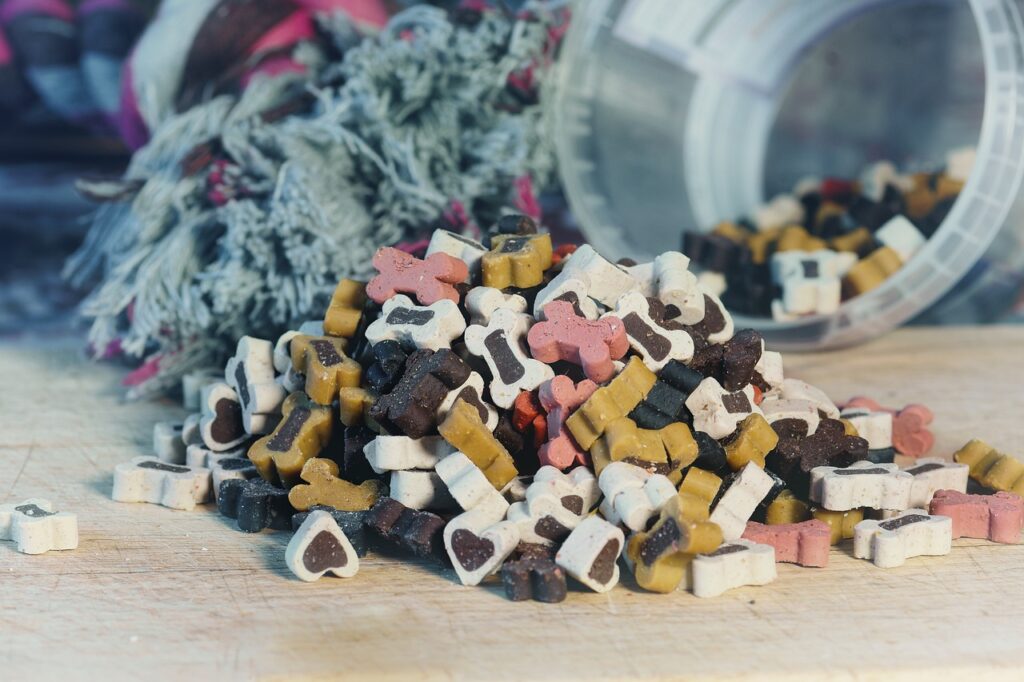Choosing the right diet for your dog is essential for their health, energy levels, and longevity. With so many options available, it can be overwhelming to decide what food is best for dogs. This guide will help you understand the best food choices, essential nutrients, and factors to consider when selecting the perfect diet for your furry friend.

Table of Contents
1. Why Choosing the Right Food Matters
The right food provides essential nutrients to keep your dog healthy, active, and happy. Poor nutrition can lead to obesity, allergies, digestive issues, and other health problems. Understanding what food is best for dogs ensures they get the proper nutrients needed for optimal health.
2. Essential Nutrients for Dogs
A well-balanced diet for dogs should include:
- Protein (for muscle growth and repair)
- Fats (for energy and a healthy coat)
- Carbohydrates (for energy and digestion)
- Vitamins & Minerals (for immune system support)
- Water (for overall health and hydration)
3. Types of Dog Food
There are various types of dog food, each with its benefits:
- Dry Kibble – Convenient, long shelf life, and supports dental health.
- Wet/Canned Food – High in moisture, great for hydration.
- Raw Diet – Fresh, unprocessed ingredients but requires careful preparation.
- Homemade Meals – Customizable but needs proper nutritional balance.
4. Best Dry Dog Food Options
Dry kibble is one of the most popular dog food choices. When selecting dry food, look for:
- High-quality animal protein as the first ingredient.
- No artificial additives or fillers.
- Essential vitamins and minerals for overall health.
Recommended Brands: best for dogs
- Blue Buffalo Life Protection Formula
- Wellness CORE Grain-Free Dry Dog Food
- Taste of the Wild High Prairie
5. Best Wet Dog Food Options
Wet food is excellent for hydration and is often more palatable for picky eaters. Choose wet food that contains:
- High meat content with real ingredients.
- No artificial flavors or preservatives.
- Added vitamins and minerals for balanced nutrition.
Recommended Brands:
- Hill’s Science Diet Wet Dog Food
- Merrick Grain-Free Canned Dog Food
- Nutro Ultra Grain-Free Wet Dog Food
6. Homemade vs. Commercial Dog Food
Both homemade and commercial dog food have their pros and cons.
Homemade Dog Food:
✅ Fresh, high-quality ingredients
✅ Customizable to your dog’s needs
❌ Requires careful meal planning
❌ Risk of nutritional imbalances
Commercial Dog Food:
✅ Convenient and readily available
✅ Meets nutritional standards (if AAFCO-approved)
❌ May contain fillers and preservatives
❌ Not always tailored to specific health needs
7. Raw Diet: Is It Safe?
A raw diet consists of raw meats, bones, and vegetables. While it offers benefits like improved digestion and shinier coats, it also has risks, such as:
- Bacterial contamination (salmonella, E. coli)
- Nutrient imbalances if not properly formulated
- Potential choking hazards from bones
8. Foods to Avoid for Dogs
Some human foods can be toxic or harmful to dogs. Avoid feeding:
- Chocolate (contains theobromine, toxic to dogs)
- Onions & Garlic (can cause anemia)
- Grapes & Raisins (can lead to kidney failure)
- Avocado (contains persin, harmful to dogs)
- Caffeine & Alcohol (both highly toxic)
9. How to Transition Your Dog to a New Diet
Changing your dog’s food should be done gradually to avoid digestive upset. Follow this schedule:
- Days 1-2: 75% old food, 25% new food.
- Days 3-4: 50% old food, 50% new food.
- Days 5-6: 25% old food, 75% new food.
- Day 7: 100% new food.
Monitor your dog for any signs of allergies or stomach upset and adjust accordingly.
Knowing what food is best for dogs helps you make informed decisions about your pet’s diet. A well-balanced diet with the right nutrients ensures a happy, healthy, and active dog. Whether you choose dry, wet, homemade, or raw food, always prioritize quality ingredients and consult your veterinarian for personalized recommendations.


